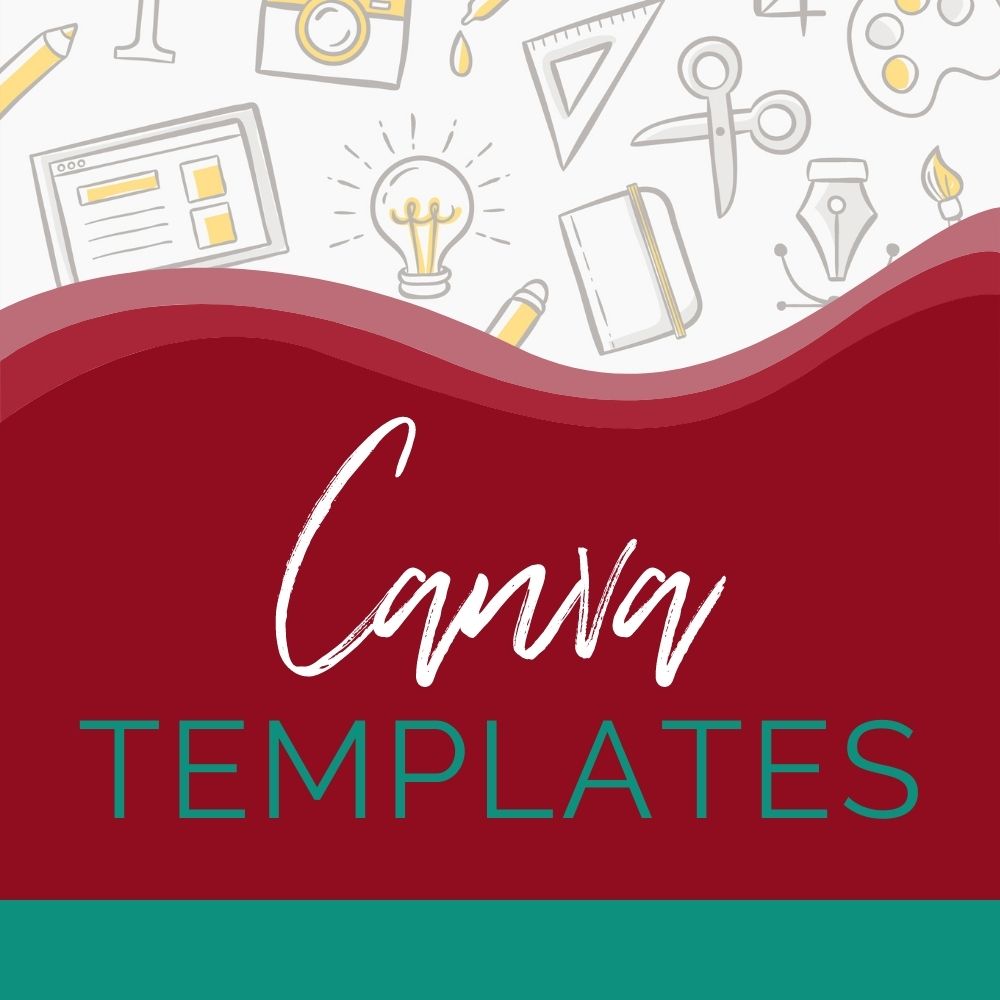Not Knowing Your Ideal Customer Is Costing You Money

One task I’ve been focusing on is taking a look at my ideal avatar. I feel like it’ll help me help my audience better if I’m able to identify who I want to serve and how I can help them if I niche down more.
Why do I want to do this?
Because I’ve been focusing on several different customers. When you do this you either have to create a message for each segment or you create one email list, blog, etc and you’re not serving them to the best of your ability.
I feel that creating an avatar of your customer is an important task to complete because it will allow you to laser target your audience and to get clear idea of who your ideal customer or client is and isn’t. You might not think about the second half of that as being important but it is.
I don’t sell the business in a box type PLR. That is okay because there are others who do and they do an amazing job at it. I sell content, printables and Canva templates and when people use them they’ll be able to grow, engage and earn money.

Knowing your audience is an essential component of being successful in business online. You need to get to know your audience intimately. That can be hard to do if you’re too focused on trying to attract everyone which seems to be what I’ve been doing.
Your audience is not everyone. It’s not even everyone who is involved in the niche you want to target and this is hard to grasp sometimes because we got into this business to help people.
Once you create one avatar, there is nothing to say that after you’ve perfected your messaging and marketing to them that you can’t create subsets of avatars for different segments of your audience.
But for now, I plan to focus on one (or two) audience segments and that is why I’m revisiting this part of my business.
I’ve discovered that creating an avatar is super important because…
- You’ll be able to send clearer messages.
- Your messages will be laser targeted to one person.
- Creating targeted content will become easier.
- Developing effective ads will be simpler.
- Product creation becomes almost automatic.
There are many reasons why marketing to an audience of one – rather than trying to appeal to the masses – will increase your reach and revenue. I feel like this is what is holding me back in my business.
Customer Avatar Example
I wanted to give you an example of the same niche such as fitness, but two very different types of customers.
Take a look at these two photos:


Can you see a difference in these two types of customers/clients?
The top one is someone who likes to do things at home. This could be for several different reasons. That is the only time she’s able to get her exercise in. She can’t leave because her kids are in the house playing. She has to carve out time in her day and driving to a gym takes too much time.
So she finds an alternative. She does it herself at home so she doesn’t have to find a babysitter.
The second one looks like she has a personal trainer. She might have different goals so she needs someone to help motivate her and she wants someone to help her do something specific – lose weight, run a marathon, cross fit, etc.
These two customers both are interested in fitness, but your message and the problem you’re solving is different. So that means the products would be different as well.
Why You Need To Build The Ideal Customer You Have Dreamed Of

I’ve been working on getting clarity or refocusing who I serve. Over the last four and a half years I’ve learned a few things when you have a broad avatar.
Take a look…
1. You Can Personalize Better
When you know who you’re talking it is so much easier to create messages that connect with them specifically. This means when you’re creating emails, blog posts, sales letters, social media and content in general you’ll be able to personalize it easier.
Instead of having generic content you can address it to “Boomer Women Who Want to Travel Alone to Ecuador”. That is more specific and gets more attention than all single women who want to travel.
The first message is going to speak to the audience so much better and mean so much more. You can even say things that are inside jokes with the community because they’ll know what it means.
2. Your Messaging Will Be More Focused
Having an avatar that is specific is going to help you focus on what their problems are and how you can solve them.
For example, as a parent who is teaching reading it is completely different with a dsylexia child or struggling reader compared to teaching a young child to read. There are different struggles not only for you as a parent trying to teach my child but also the child. The way they feel the way they process the information and even how they learn.
So if I was a tutor I’d approach these two parent segments differently or focus on one of them.
3. You’ll Save Time & Money

Trying to please everyone all the time – even if they might just be in the peripheral of your audience – is time-consuming and, frankly, exhausting. Just imagine that you’re trying to market a wonderful adventure to a specific resort in Mexico.
Why would you even talk about anything else than that resort and direct it to anyone but the type of people who can afford that resort? Sure, some people will come across the ad and be upset that they cannot afford it. They might even be mad. But that’s okay because everyone else who is the right audience will book a trip. If you were wishy-washy about the cost, you may get calls from people who cannot afford it. That’s a waste of your time and theirs.
When you are crystal clear on who your audience is, your ads, content, and even your products will be more effective. Everything will be laser focused on your audience of one’s needs and not everyone in general.
BONUS: Your PLR Will Be Easier To Use
When you know who your ideal community is you’ll be able to customize the content easier. You can take out content that doesn’t apply to who you’re helping, add examples that resonate with them, be clear on your message throughout, and give resources specifically for your audience.
If I were a coach that served parents with children that have a hard time sleeping – I’d focus on resources for children and not adults. This could mean specific YouTube videos designed for tips on what to do to help children go to sleep or it could mean sharing specific products for parents to purchase. As a parent I’d look for different products and tips and I’d definitely use the word child when I was searching.

When I was reading articles, eBooks or reports I’d want it to be focused on helping my child and use that word throughout otherwise I’d go to another resource because I wouldn’t know if it was specifically for children.
So when you buy PLR packs – go through and change things differently based on who you’re serving and your ideal avatar.
Don’t worry, this is not going to lower your reach or your income. In fact, by laser focusing in on an audience of one, you’re going to reach more people, get more traffic, and make more money.
Questions To Answer When Creating Your Avatar
I’ve been talking about creating a customer avatar and why it’s important, but how do you do that? Most people start with the basics of what someone looks like, but let’s start with their goals, problems and how you’re going to help solve them.
But first, let’s give them a name:
Give them a name: ______________________
This will help envision your customer when you’re thinking about the questions below:
First, look over the question below and start to imagine your customer as you do. Read through them first and jot down anything that springs to mind. Then I’d put it aside for an hour or even a day. Then go through them again and start to fill out the information more thoroughly.
You want to know who buys your products and why and this exercise is going to help you figure that out.

What are their goals?
- Business
- Personal
- Family
Their goals are extremely important to you. Why? Because they’re extremely important to them. You have to know why the goals and why they’re doing something in order to help them accomplish it.
For example, my goal is to earn money with an online business, but it is much deeper than that.
My why is to be able to provide my son and me with a lifestyle where we have the freedom to do what we want. I don’t have to ask a boss to take a day off when I want to go to the beach or go pet sit a pig for 6 weeks. We can do both of those things because my business allows me to do it.
My why is also so that I can spend my time with my son. I am able to go on adventures and homeschool him. I love homeschooling and I’m thankful that I’m able to do that instead of sending him to school.
My goals and why I work online are going to be different then your customer’s, but they’re most likely focused in the same areas or something similar. Here are some family, freedom of lifestyle, living their purpose, and helping others.
So think about your community. What are their goals?

Dig Deep Into Their Problems
When you’re designing your customer avatar, you also want to think about the problems that you can solve that they may have. Remember to focus your questions on how each relates to your niche.
- List 3 problems they have that you can solve with your product or service.
Now it’s time to dig very deep into the serious issues that your ideal customer can have if they don’t solve their problems. This information is what you can use to create marketing materials that convince them to use your solutions.
2. Ask yourself, what is the very worst thing that can happen to your ideal customer if they do not solve their problem?
Try to imagine how they would answer it.
3. How do they feel about not solving the problem?
Consider all the things that can happen if that problem is not solved. Think about these questions and others that they might be considering as well.
- Will they lose friends?
- Will family judge them?
- Will they lose their job?
- Will they lose face with others?
- Will their spouse or partner support them?
4. What are all the worst-case scenarios that can happen if the problem isn’t solved?
5. Now start thinking about what will happen to your customer if they do solve their problem?
- What would it look like?
- What if it was perfect?
- What if it was simple?
6. What if they would be willing to pay or do almost anything to see that come true?
7. What can you do to ensure that your product or service lives up to your promises?
8. Describe what your customer needs to fix it all. Describe how your product or service answers to their problems.
Some of these might come to you quickly, while the next question might stump you, but work through them the best that you can and answer them as throughly as possible.
ACTION STEP:
Now that you’ve thought about and answered the questions about we’re going to write a paragraph.
- Write a story about your ideal customer that answers all of that.
Answering the questions above will help you put them together in a story about who your avatar is. You’ll want to describe how the problem affects their life, business, or others.
Once you work all that out, it’ll be a lot easier to create your customer avatar. It will help if you create a background story for your avatar as if they’re a real person with real problems… because they are!
~April
P.S. I’d love to hear how this exercise is going for you. Did you come up with your avatar?



